Opinion & Analysis
Wishon: 7 club fitting keys to improve shot consistency

One of the simplest ways golfers can improve their games is through proper club fitting, which is often overlooked because of the emphasis golf equipment companies place on trying to help golfers hit the ball farther. Adding distance is great, but it doesn’t always come with an improvement in shot consistency. Sometimes, it actually has the opposite effect, whereas a proper fitting almost always improves shot consistency and often leads to more distance as well.
When I speak about shot consistency, exactly what am I talking about? A higher percentage of on-center hits? Sure, that’s an improvement in shot consistency. But so too, and perhaps even more important, are elements of consistency such as a reduction in how far a slice or hook curves off line, or a reduction in the number of poor shots.
Perhaps the best way to express what an improvement in shot consistency means is to help the golfer “miss the ball” better. If you’ve played the game a while, you are well aware of the type of shots that are classified as a “good misses.” No one hits all the shots well. In fact, the best golfers can be said to be those who “miss their shots the best.”
Therefore, the purpose of this article is to offer some of the best fitting tips for “better missed shots” and from it, better shot consistency.
1. A shorter driver, but also shorter fairway woods
At the risk of sounding like a broken record, the percentage of golfers who have improved their tee shot consistency by going much shorter with the length of their driver is nothing short of spectacular. The only male golfers who have a real chance to play well with a 45-inch driver are those with a smooth tempo, great swing rhythm/timing, inside-out to square swing path, later release and good golf athletic ability on top of those things.
For golfers who fall short in one or more of those elements, don’t even think about a driver longer than 44 inches. If the golfer falls short in three or more of those factors, don’t go longer than 43 to 43.5 inches. Longer length only means higher club head speed for golfers with a later-to-very-late release. And even for those with a later release, for 98 percent of them longer length means more off-center hits.
But don’t just think shorter drivers for better shot consistency. Think shorter fairway woods, too. The old fairway wood length standards were 43 inches for a 3 wood, 42.5 inches for a 4 wood, 42 inches for a 5 wood and 41 inches for a 7 wood. Golfers should consider using fairway woods that are a half inch to a full inch shorter than that if they do not possess most of the above ideal swing tempo/release characteristics. You’d be amazed at the improvement in shot consistency from shorter fairway woods.
2. Proper face angle fitting to address misdirection tendencies
Preaching to the choir, element No. 2 for shot consistency is to fit the face angle of the driver, fairway woods and even the hybrids to offset the golfer’s slice or hook tendency with those clubs.
Always keep these two key points in mind when viewing a face angle change for improving shot consistency through better accuracy:
- At a carry distance of 200 yards, a 1-degree change in the face angle from what it was before represents a slice or hook reduction of 4 to 5 yards.
- For a face angle change to work best, you have to know the face angle of your present clubs so you know how much of a change to make to bring about a visible reduction in the slice or hook.
For a face angle change to do its job, you have to address the ball with the face angle sitting as it is designed. All too often, golfers not used to an open or closed face will rotate the head to assume a more square position at address. If you hook or slice and want that to be immediately reduced, you’ll need to just get used to the fact that if you slice or hook the ball, your new face angle is going to sit with the face pointing in the opposite direction of your misdirection tendency.
One last point for golfers with one of the adjustable hosel drivers: The only way these drivers can change the loft is if the golfer always holds the face square in the address position. If you are a relatively straight hitter, fine, you won’t need any face angle help. But if you are a chronic fader/slicer/drawer/hooker, a change in the face angle from what you currently use can be a huge help.
As such, trying to get that from one of the adjustable hosel drivers is difficult and confusing. For that reason, it is best to work with a club fitter who knows his stuff and can source the right driver head that has both the loft AND face angle you need.
3. Matching total weight and swing weight to the golfer’s transition, tempo and strength
If the total weight and/or the swing weight are too heavy for the golfer, more off-center hits, pushed shots and thin shots can result. If the total weight and/or the swing weight are too light for the golfer, a more outside-in path, slice and off-center hits can result.
While we talk a lot in fitting about the total weight (shaft weight) and the swing weight as separately fit elements, from a shot consistency standpoint you have to think of the two working together. For many golfers, the swing weight (meaning the head weight FEEL) is more important for shot consistency improvement than the total weight.
Typically, the more forceful the transition, the faster the tempo and the stronger the golfer, the heavier the total weight (shaft weight) and swing weight would be to best match the golfer’s timing and rhythm. And vice versa, usually the more smooth the transition and tempo and the weaker the golfer, the lighter the total weight (shaft weight) and swing weight would be. It’s not always this way, however, because golfers develop differences in what they think feels best when they swing the club.
It’s also totally possible for golfers with a stronger transition and tempo to end up being well fit into a lighter weight shaft (lighter total weight), but much less likely that a weaker/smoother-swinging golfer would be well fit into a heavy shaft for a heavy total weight.
If a stronger golfer with a little more aggressive transition move were to use a 55-to-65-gram shaft, the light total weight of such a light shaft weight can be offset by using a little to a lot higher swing weight. But on the other hand, it is rarely if ever a good thing to fit a golfer with a smooth transition/tempo and below average strength with a shaft that weighs more than 75 grams, but then try to mute that heavier shaft effect with a low swing weight.
But do remember, weight fitting also has to take the golfer’s personal, acquired preference for the weight feel of the clubs into account. There can be infrequent times when the weaker/smoother-swinging player prefers a heavy feel while a strong/aggressive player could possibly like a lighter feel.
In the end, there is no such thing as a total weight/swing weight detector in fitting. You start with the tendencies of swing force versus club weighting listed here, then experiment to find the combination that works best. In the end, the right total weight and swing weight is found when the golfer never has to make any type of conscious move or effort to control his swing tempo and timing.
4. MOI match the woods and the irons instead of swingweight matching
Ask any mechanical engineer. If the goal is to build all the clubs in a set so they swing with exactly the same effort and feel, the best way to do that is to build the clubs to have the same MOI rather than the same swing weight. MOI matching has been around now for 10 years so the statistics are starting to show tendencies.
When the MOI is chosen properly for the golfer, again based on his transition, tempo, strength and personal FEEL preference, the subtle improvements show up as more on-center hits more often, fewer pulled and pushed shots and a few more greens hit in regulation. But what MOI is right for each golfer is still a guess-and-check process.
The way the best club fitters do it is to build a test club of at least the 5 or 6 iron that possesses everything BUT the weighting the golfer needs in his fitting. The club has the right length, loft, lie, shaft and grip, but the head weight is left light. Then the golfer goes through a process of hit three shots, after which weight is added to the head. This process is repeated until the point is found when the golfer definitely perceives the head weight to be too heavy and too laboring to swing consistently on tempo. A fitter then backs off some of the weight and that becomes the benchmark club from which the MOI is measured and then duplicated on the other clubs in the set.
Final point: For the vast majority of golfers, the best MOI for the driver and woods will be +60-to-70 g/cm2 (the MOI measurement increment) higher than what was found to be the golfer’s best MOI in the irons.
5. Set makeup changes: so underappreciated, but so important
One of the most overlooked fitting factors that will assuredly improve overall shot consistency and deliver better misses for golfers is the set makeup. The whole concept of proper set makeup fitting is to get rid of hard-to-hit clubs and replace them with clubs that hit the ball the same distance and are easier to hit more consistently.
I am talking about the following elements:
- Having an alternative “control driver” of shorter length and higher loft. It can be used in lieu of the normal driver for courses with a greater number of tight tee shot holes, or for days when the swing is not as much “in sync” as other days.
- No three wood for the majority of golfers. Many should start with a 4 or 5 wood, unless the golfer definitely has the skill to consistently hit a fairway wood with 14-to-15 degrees of loft off the ground well up in the air.
- Having more woods, and definitely a 7 wood for most average players. Even a 9 wood for many golfers will work well, especially if the golfer tends to sweep the ball and/or has an early to midway release. And make it a little shorter as well.
- More hybrids instead of more fairway woods? As the golfer’s release gets from midway to slightly later than midway, and as the golfer can consistently hit down and through the shot, the option leans for more hybrids instead of more fairway woods to avoid the hard to hit low-lofted irons.
- Use one more hybrid than the golfer thinks he/she should use. Get the golfer to be totally honest in answering this question, “What is the lowest number iron I can hit consistently well 4 out of 5 times from normal lies?” If he is an 8-handicap golfer or lower, make that iron the break between the last hybrid and first iron in the set. If he is above an 8 handicap, add on one more hybrid and start the irons one number higher than what the golfer thinks he should use. Today’s much lower-lofted irons are fine as long as the golfer is honest in admitting what iron number sees the first big increase in inconsistency and starting the hybrids there. Don’t let ego get in the way of a smart set makeup that allows you to hit more greens and score better.
- Additional wedges. Or rather, tailor the wedge set makeup to the grass, sand and green design of the golf course(s) the golfer plays the most. It is very smart for a golfer to have different wedges of different lofts and sole designs so he can pick the wedge set makeup for the course he happens to be playing that day (this is a big topic to know what wedges to play for what differences in turf, sand and green design, and one I promise to write a detailed story about it in the future).
6. Grip size and feel for comfort
Forget the hand size/finger size charts that golfers use as a deciding factor for grip size. Fit for grip size ONLY on the basis of golfer comfort. Regardless of hand/finger size, the best grip size for every golfer is the size that he feels is most comfortable and allows him to maintain a secure hold on the grip with the least amount of grip pressure with the hands and forearms.
One more thing about grips versus shot consistency: Scrub/wash your rubber grips every other round, and lightly sand the rubber grips every 1 to 2 months as needed with 220- to 240-grit sandpaper. Keeping grips feeling more new can most definitely can help the golfer maintain a higher level of swing and shot consistency.
7. The correct lie angle for ALL the clubs
You’ve all seen the diagram that shows the ball going left when the toe end of the club head is up at impact and the ball going right when the heel side of the head is up at impact.
It goes without saying that dynamic lie fitting eliminates all possibility of an ill-fit lie from ever causing an offline shot. As such, why NOT do it? And think about getting your woods and hybrids fit dynamically for lie. Can’t find anyone with fairway woods and hybrids that can be bent to accommodate a wide range of lie fitting needs? If you look hard enough, you will. They do exist.
I can’t tell you enough in strong terms how valuable all of these fitting keys can be for your score and your enjoyment of this great game. Don’t pooh-pooh these fitting elements as either being less important or something only for mid-handicap players and above. They work to deliver better misses, which in turn means lower scores. Have fun, and as always the very best to everyone in this great game.
- LIKE114
- LEGIT11
- WOW5
- LOL2
- IDHT0
- FLOP0
- OB0
- SHANK3
19th Hole
Vincenzi’s 2024 Masters betting preview: Niemann to play star role at Augusta National

It’s been over nine months since we saw Brian Harman parlay a dominant performance at Royal Liverpool into a claret jug. After another major offseason filled with a feud between the PGA Tour and LIV Golf, talks of a merger, and a multitude of questions regarding the future of the game, the golf world is desperate for all of the best players in the world to come together again for a major championship.
We return to Augusta National with excitement at a fever pitch. Scottie Scheffler has separated himself as the best player in the world heading into the Masters. At the moment, the 27-year-old seems to be an unstoppable force. However, questions about Scheffler’s up-and-down putter once again resurfaced as he missed multiple short putts at the Texas Children’s Houston Open including a 5’11” putt to force a playoff with Stephan Jaeger.
Additionally, a handful of the PGA Tour’s top players such as Justin Thomas, Rory McIlroy, Will Zalatoris, Patrick Cantlay, Tommy Fleetwood and Jordan Spieth make their way to Augusta National with their current form in question.
Plenty of LIV golfers may be up to the task of conquering Augusta, but with so much time in between the last two majors, it’s not always easy to decipher how their games will stack up against Scheffler and co.
Last year, some important changes were made at Augusta National. The par-5 13th (Azalea) was lengthened by 35 yards and now measures 545 yards. Last year, Azalea played as the toughest of the four par 5s, and players averaged 4.74 for the week, which was down from 4.85 in 2022. However, eagles, birdies and bogeys were all up, so the lengthening achieved less pars, which equals more excitement.
Without further ado, let’s get into the course breakdown and analyze some important statistics for Augusta National.
Augusta National is now a 7,510-yard par-72 with lightning-fast Bentgrass greens. The course’s primary defenses are the contoured greens, swirling crosswinds, the topography of the course, which creates uneven lies and the small landing areas that golfers will need to hit to avoid tight run-off areas around the greens.
Past Winners at the Masters
- 2023: Jon Rahm (-12)
- 2022: Scottie Scheffler (-10)
- 2021: Hideki Matsuyama (-10)
- 2020: Dustin Johnson (-20)
- 2019: Tiger Woods (-13)
- 2018: Patrick Reed (-15)
- 2017: Sergio Garcia (-9)
- 2016: Danny Willett (-5)
- 2015: Jordan Spieth (-18)
- 2014: Bubba Watson (-8)
- 2013: Adam Scott (-9)
- 2012: Bubba Watson (-10)
- 2011: Charl Schwartzel (-14)
- 2010: Phil Mickelson (-16)
In this article and going forward, I’ll be using the Rabbit Hole by Betsperts Golf data engine to develop my custom model. If you want to build your own model or check out all of the detailed stats, you can sign up using promo code: MATTVIN for 25% off any subscription package (yearly is best value).
Key Stats For Augusta National
Let’s take a look at the six most important metrics at Augusta National and determine which golfers boast top marks in each category over their last 24 rounds. This should give us a good starting point for building out a betting card.
Strokes Gained: Approach
Approach is historically the most important statistic at Augusta National. The sloping, speedy greens and run-off areas create small landing spots that can be difficult to hit.
Last year, Jon Rahm ranked 6th in the field in Strokes Gained: Approach. Overall, five of the past seven winners at Augusta have ranked in the top 6 in the category. Distance helps, but Augusta National is a second-shot golf course.
Total Strokes Gained: Approach in past 24 rounds:
- Scottie Scheffler (+1.30)
- Corey Conners (+0.99)
- Shane Lowry (+0.88)
- Tony Finau (+0.85)
- Austin Eckroat (+0.85)
Course History
More so than any other course on TOUR, familiarity with Augusta National is crucial. Only one player has ever won the Masters on their first try — Fuzzy Zoeller in 1979. Meanwhile, there are 17 golfers in history who have multiple green jackets.
In most cases, the Masters champion has shown some good form at Augusta in the past. Prior to Scottie Scheffler’s 2022 victory, he finished T19 and T18 in his first two trips to the course. Prior to 2023, Rahm had finished in the top-10 of four of his six starts at The Masters.
Total Strokes Gained: Total at Augusta National in past 36 rounds (per round, minimum eight rounds):
- Will Zalatoris (+2.91)
- Jon Rahm (+2.28)
- Jordan Spieth (+2.22)
- Scottie Scheffler (+2.22)
- Dustin Johnson (+2.01)
- Rory McIlroy (+2.00)
- Hideki Matsuyama (+1.90)
- Justin Rose (+1.85)
- Rickie Fowler (+1.72)
- Russell Henley (+1.60)
Par 4 Scoring Average
Since plenty of players can reach the par 5s at Augusta in two, par-4 scoring becomes more important. The golfer who separates themselves on the par 4s will be able to gain ground on the field.
Par 4 Scoring Average in past 24 rounds:
- Scottie Scheffler (+3.88)
- Chris Kirk (+3.92)
- Jordan Spieth (+3.93)
- Peter Malnati (+3.93)
- Xander Schauffele (+3.93)
Strokes Gained: Around the Green
Golfers with a solid short game tend to fare well at Augusta National. The run-off areas are treacherous, and players will often be scrambling to get up and down.
The majority of players who have won at Augusta National have a great short game and have shown consistent ability to get up and down from tough spots.
Total Strokes Gained: Around the Green in past 24 rounds:
- Hideki Matsuyama (+0.71)
- Scottie Scheffler (+0.66)
- Patrick Reed (+0.61)
- Xander Schauffele (+0.53)
- Lucas Glover (+0.51)
Strokes Gained: Off the Tee
Augusta National is most definitely a second shot golf course. Golfers can get away with a missed fairway here and there, however, it’s important that the misses with driver aren’t too wide of the target or there is serious trouble to be had.
Total Strokes Gained: Off the Tee in past 24 rounds:
- Bryson DeChambeau (+1.04)
- Rory McIlroy (+0.85)
- Scottie Scheffler (+0.84)
- Xander Schauffele (+0.71)
- Ludvig Aberg (+0.68)
Strokes Gained Putting: Fast Bentgrass
The USGA calculates that, on average, the greens at Augusta National are the fastest greens in the country. Three-putting is fairly common at Augusta and golfers must be able to combat the speed of the greens with effective lag putting.
Total Strokes Gained: Putting on Fast Bentgrass in past 24 rounds:
- Justin Rose (+1.43)
- Sahith Theegala (+0.97)
- Min Woo Lee (+0.88)
- Cameron Smith (+0.70)
- Patrick Reed (+0.70)
Statistical Model
Below, I’ve reported overall model rankings using a combination of the six key statistical categories previously discussed.
These rankings are comprised of SG: App (25%); Course History (16%); Par 4 Scoring Average (10%); SG: Putting on Fast Bentgrass (16%); SG: OTT (16%). and SG: ARG (16%).
Last year, Jon Rahm ranked first in this model
- Scottie Scheffler
- Xander Schauffele
- Hideki Matsuyama
- Tony Finau
- Justin Thomas
- Shane Lowry
- Will Zalatoris
- Corey Conners
- Si Woo Kim
- Rory McIlroy
- Stephan Jaeger
- Jordan Spieth
- Chris Kirk
- Keegan Bradley
- Wyndham Clark
- Sahith Theegala
- Russell Henley
- Collin Morikawa
- Matt Fitzpatrick
- Patrick Reed
My 2023 Pick:
Jon Rahm (+950) (FanDuel)
A few months ago, I never thought that I’d be able to say that Rahm would be going slightly under the radar heading into the 2023 Masters. It’s not that Rahm has done anything wrong, but both Scheffler and McIlroy have undoubtedly surpassed him as the scorching hot, super-elite, top of the market betting favorite category.
Since his win at Riviera, the Spaniard has finished 39th at Bay Hill, withdrew at The Players Championship, and failed to get out of the group stage at the WGC Dell Match Play. On the other hand, Scheffler won The PLAYERS Championship and McIlroy finished third at the WGC Dell Match Play.
Rahm has made six starts at The Masters and has come in the top-10 in four of them. The 28-year-old has incredible power off the tee, a requirement at Augusta which always plays longer than the scorecard indicates. He’s also incredible around the greens and ranks third in the field in Strokes Gained: Short Game, which is a combination of around the green play and putting, in his past 24 rounds.
As we’ve seen over the years at The Masters, having the ability to chip and putt your way out of difficult situations is a fundamental aspect of getting it done at Augusta National.
While Scheffler has made a strong case to be viewed as the world’s best player, I still believe that title belongs to Rahm. This will be the year Rahmbo joins the ranks of Seve Ballesteros, José María Olazábal, and Sergio Garcia as natives of Spain to don a green jacket.
2024 The Masters Picks
Brooks Koepka +2500 (DraftKings)
In order to win the 2024 Masters, a player will have to go toe-to-toe with Scottie Scheffler, who’s hitting the ball as anyone in golf over the last two seasons. When building a betting card this week, it’s important for me to choose players that I believe can stare Scheffler down on the weekend at Augusta National. Brooks Koepka fits that bill.
Koepka’s lackluster performance at LIV Miami is concerning, but he’s the type of player who can turn it on quickly during the week of a major championship. Although I’d have preferred, he played well last week, I’ll take the odds discount we got as a result of his most recent results.
Prior to LIV Miami, Koepka appeared to be in solid form. He finished in the top twelve in four of five starts on LIV this season. When it comes to the five-time major champion, it’s well known that he has another gear for major championships. Everything he’s done both in the off-season and during the LIV season is to gear up for the year’s first major at Augusta National.
In his past five starts at Augusta National, the 33-year-old has three top-7 finishes, including two runners-up. The two years when he played poorly (2019 and 2020) were when he was nowhere near 100% healthy. All signs point to Brooks being in a great place physically as we enter major season.
Last year, Koepka was the 36 and 54-hole leader prior to letting the green jacket slip away to Jon Rahm. He used the result as a springboard to win his 5th major at Oak Hill at the PGA Championship.
Brooks enters the week looking to get one step closer to achieving the career grand slam and golf fans would be foolish to rule him out.
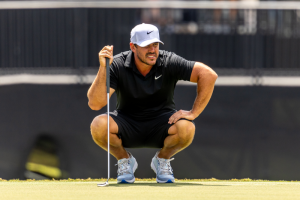
Joaquin Niemann +2800 (BetRivers)
Full disclosure, I bet Niemann the second he was invited to The Masters back in February at +8000. Although the odds have shortened dramatically since then, I can’t pretend that the Chilean isn’t one of the players who has a real chance to win the 2024 Masters.
While I was speaking with Niemann back in March, he told me how much he loves Augusta National.
“Yeah, it’s a place that I love. I’ve been playing good golf. Especially last year, I wasn’t playing my best golf, and I had a good week there and made triple on 11 that kind of killed me a little bit.
I feel like I’m getting more ready and more prepared every time. My game is getting better too. I know that I’m playing good enough to be in that situation that I can have a chance to win the Masters and it’s all about how I react to that situation.
So yeah, I’m going to prepare myself to be ready for that situation if it happens and I can fight for the title on the Sunday which would be awesome.”
As Niemann alluded to, the Chilean was able to have his best career finishes at The Masters (T16) despite not being in the best form. This year, Niemann comes into the week playing better golf than anyone in the world with the exception of Scottie Scheffler. The 25-year-old has won three times since December and has shown the world why he was regarded as one of the games future stars since he was a teenager.
Historically speaking, Joaco’s win at Riviera a few years back seems to be an indicator of potential success at Augusta National. Fourteen players have won at both historic courses including Hideki Matsuyama, Jon Rahm, Phil Mickelson, Dustin Johnson, Nick Faldo, Tom Watson and Ben Hogan.
Niemann has all the shots to be successful at Augusta National. His low stingers will come in handy on plenty of holes down the stretch and he can work it both ways, playing the high draw or the low fade. He also putts best on Bentgrass greens and likes them fast. Whether PGA Tour or LIV, talent will always reign supreme, and I’ll always bet on that talent.

Cameron Smith (+4000) (FanDuel)
Cameron Smith is another player who we should get an odds discount on based off of the results at LIV Miami. Smith was forced to withdraw prior to the second round due to food poisoning. In my opinion, the number has drifted to a place where I’d consider it a “bet the number” play on the talent.
Smith is a contender for the green jacket anytime he tees it up at Augusta National. The Australian absolutely loves the golf course and has four top-10 finishes in his last six trips to the golf course. In both 2020 and 2022, Smith had a real chance of winning The Masters and came up just short, finishing T2 and T3 in those two tries. In his past 36 rounds, he ranks 4th in Strokes Gained: Total per round at Augusta.
In order to be successful at Augusta National, players must be creative around the greens and be shot makers who have plenty of ways to get around the golf course. Cam has all the shots required to be successful at the course at his touch around the greens will continue to serve him well in his hopes for a green jacket.
Smith is arguably the best putter in the world and has the capability to win a golf tournament on and around the greens. He’s already taken down Rory McIlroy at the home of golf on his way to a claret jug and is one of the few players who can stare down any of the world’s top golfers on the back nine at Augusta National.

Justin Thomas +4000 (FanDuel)
With how he’s been playing since his 2022 PGA Championship win, you may be shocked to see the name “Justin Thomas” in this preview. However, JT has drifted to a place on the odds board where I believe it’s worth taking a shot on the talent of a two-time major champion in his prime.
It’s not all bad for Thomas this season. He finished T6 at the signature Pebble Beach event, T12 at the Waste Management Phoenix Open and T12 at the signature Arnold Palmer Invitational. In his last 24 rounds, JT ranks 8th in the field in Strokes Gained: Approach, 14th in Strokes Gained: Around the Green and 29th in Strokes Gained: Putting on fast Bentgrass greens.
Despite missing the cut last season, Thomas has played pretty well at Augusta National. He ranks 13th in Strokes Gained: Total in his past 36 rounds at the course. He finished T4 in 2020, T21 in 2021 and T8 in 2022.
I believe the 2024 edition of The Masters is completely wide open. The past few years has been frustrating for Thomas fans, but I believe his peak form may be a bit closer than people realize.
Sergio Garcia +12000 (FanDuel)
Earlier this season, Garcia dueled with Joaquin Niemann before finally losing on the fourth playoff hole late into the night. Despite the loss, the 44-year-old seemed to gain confidence in his game. The results that followed weren’t spectacular, but in terms of his ball striking he’s shown some flashes of vintage Sergio.
At LIV Miami last week, Garcia played well on a massive golf course, losing in a playoff to Dean Burmester. He continued pumped the ball into the fairway and hit massive iron shot after massive iron shot. He also used a refurbished Scotty Cameron that he used in the 1999 PGA Championship at Medinah. The putter served him incredibly well until he missed a short putt on the 18th hole to win the event. Overall, he gained 7.1 strokes putting at Doral.
Sergio Garcia is once again headed to Augusta National with a chip on his shoulder. Of course, having a chip on the shoulder is nothing new for the fiery Spaniard, but this year, the 2017 Masters Champion will arrive at Augusta with his game clicking on all cylinders.
Sergio winning a second green jacket is seemingly an almost impossible feat, but magical things tend to happen on the hallowed grounds of Augusta National.
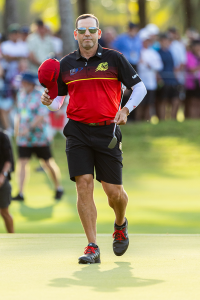
Adam Scott +11000 (FanDuel)
Betting Adam Scott over the past handful of years has been a Masters staple for me, and like many traditions, has been a hard one for me to let go of.
Last week, Scott finished T14 at the Valero Texas Open in a windy and difficult week. I believe the wind will be a major factor this week at Augusta National, and the more difficult the tournament plays, the more I favor Scott. Scott also ranks 5th in his past 24 rounds on Strokes Gained: Putting on Fast Bentgrass and has the short game these days that could help him contend in a major.
Since his win in 2013, Scott’s history at The Masters has been spotty. He has some poor finishes alongside a T9 in 2017 and a T18 in 2019. He’s been playing some solid golf this season, finishing T8 at the Waste Management Phoenix Open and T19 at the Genesis Invitational.
(All photos in piece belong to LIV Golf)
- LIKE21
- LEGIT18
- WOW6
- LOL1
- IDHT0
- FLOP4
- OB0
- SHANK10
Opinion & Analysis
The 22 players who can win the Masters
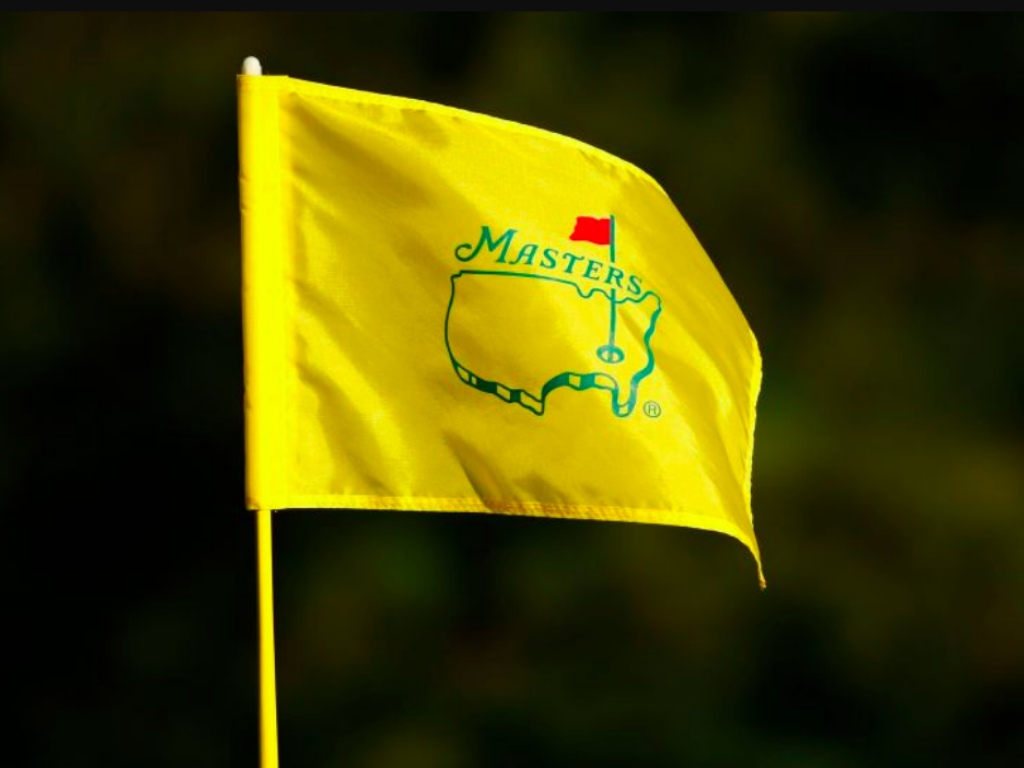
Since 2013, I have created a filtering process to help determine the players who are most likely to win the green jacket based on criteria that have strongly predictive outcomes to success at Augusta. The list of players that can win at Augusta is usually filtered down to 20-24 players and in that time I have correctly shortlisted every Masters champion.
This includes last year’s winner, Jon Rahm. Even though Rahm essentially walked away with the green jack and did not make it very close, there were some close calls on top of the leaderboard as I had filtered out Phil Mickelson (t-2nd) and Patrick Reed (t-4th) as the LIV Tour is still behind on providing advanced analytics for their tour. Russell Henley was also filtered out and finished t-4th, five strokes from Rahm’s winning score of 276.
If you’re watching at home, the “critical holes” that will likely determine the top finishers will be holes No. 7, 8, 11 and 13. The 11th hole is projected to be the most critical of holes as over the past five Masters the top players have gained nearly a 1.5 strokes for the tournament on that hole alone.
Just like last year’s column I will get the LIV Tour players I’ve filtered out of the way. Since LIV Tour does not provide ShotLink or Trackman data, it’s more of a guessing game as to how certain LIV Tour golfers are playing. I did utilize recent performance as well as performance at Mayakoba and Doral as they were two former PGA Tour courses that have some semblance of crossover to playing Augusta.
Phil Mickelson
Thorbjorn Olesen
Charl Schwartzel
Cameron Smith
Bubba Watson
Admittedly Cameron Smith and Phil Mickelson are hard to leave out, but both have not played well as of late.
Next, I filtered out the amateurs and all first-time professional attendees. The Masters has only been won three times by a first-time attendee: Fuzzy Zoeller was the last to win in 1979. Prior to Zoeller though, it was Horton Smith in the inaugural event in 1934 followed by Gene Sarazen in 1935
Ludvig Aberg
Akshay Bhatia
Wyndham Clark
Eric Cole
Santiago de la Fuente (a)
Nick Dunlap
Austin Eckroat
Stewart Hagestad (a)
Ryo Hisatsune
Lee Hodges
Nicolai Hojgaard
Stephan Jaeger
Jake Knapp
Christo Lamprecht (a)
Peter Malnati
Denny McCarthy
Grayson Murray
Matthieu Pavon
Adam Schenk
Neal Shipley (a)
Jasper Stubbs (a)
Out of the first time invitees the data likes Ludvig Aberg and Eric Cole to play the best at Augusta National.
I also filter out old Masters champions that I do not believe can get into contention anymore.
Fred Couples
Jose Maria Olazabal
Vijay Singh
Mike Weir
Tiger Woods
Recency has a strong predictive value for player performance and missing the cut in the event in the prior week greatly reduces the likelihood of winning the following week compared to players that miss the cut, take a week off, and then play the following week. Therefore I filter out all players that missed the cut at the Valero Texas Open last week.
Byeong Hun An
Harris English
Rickie Fowler
Ryan Fox
Zach Johnson
Tom Kim
Erik van Rooyen
Camilo Villegas
I will also filter out the players that have never made the cut at the Masters:
Kurt Kitayama
Adrian Meronk
A Tradition Unlike Any Other…
Augusta National has traditionally favored longer hitters and even moreso in the past 20 years of the event. Of course there has been exceptions as in 2007 the short hitting Zach Johnson ended up winning the event.
Critics of my filtering system point out Johnson’s victory as a case for short hitters being able to win at Augusta, but they neglect the fact that Johnson’s victory came in historically low temperatures in the 40’s with wind gusts reaching 35 mph. That made the par-5’s almost unreachable in two shots and the course stressed wedge play and short game around the green where Zach had a sizable advantage.
It is projected to rain early on Thursday and then the weather is supposed to be sunny and warm for the rest of the week. It depends on how quickly the course dries up, but if it does dry out fairly quickly that will give the longer hitters the advantage as they will be able to reach certain par-5’s in two shots that the shorter hitters cannot reach if they don’t hit a quality tee shot and there may be par-5’s that some of the long hitters can reach in two shots with a short iron. Therefore I will filter out the following players due to a lack of distance off the tee:
Corey Conners
Lucas Glover
Emiliano Grillo
Brian Harman
Si Woo Kim
Chris Kirk
Shane Lowry
Colin Morikawa
JT Poston
Justin Rose
Sepp Straka
Out of these players the data likes Lowry and Morikawa the most. Both have good history at Augusta and they both just narrowly missed the distance benchmark set in the filter and both are excellent long iron players.
Last year I created a new formula to better determine ball height as Augusta has historically not taken too kindly to a low ball flight. Out of the 5 players filtered out for low ball flight using the new formula the best finish was only t-29th by Si Woo Kim. This year I’ve filtered out the following players.
Matthew Fitzpatrick
Sungjae Im
Luke List
Joaquin Niemann
Justin Thomas
Every year I filter out the poor performers on approach shots from 175-225 yards as Augusta National puts a lot of stress on those shots. Last year I filtered out nine players and three of them missed the cut with only Jordan Spieth finishing in the top-15 (t-4th) as the rest of the players were never a threat.
Here are the golfers I’m filtering out due to poor play from 175-225 yards:
Patrick Cantlay
Cameron Davis
Jason Day
Tommy Fleetwood
Russell Henley
Max Homa
Rory McIlroy
Jordan Spieth
Nick Taylor
Rory had a nice outing at the Valero Texas Open and hit his irons better there, but appears to be struggling with a leftward miss. Other than that, Rory still has the game to win his first green jacket. Henley is usually one of the better iron players on Tour, but he has struggled this season from 175-225 yards and is a short hitter anyway.
I will also filter out Danny Willett as he is coming off injury and making his comeback at the Masters.
That leaves the 22 players that can win the Masters:
Keegan Bradley (150/1)
Sam Burns (60/1)
Bryson DeChambeau (25/1)
Tony Finau (50/1)
Sergio Garcia (100/1)
Adam Hadwin (175/1)
Tyrrell Hatton (80/1)
Viktor Hovland (35/1)
Dustin Johnson (40/1)
Brooks Koepka (16/1)
Min Woo Lee (70/1)
Hideki Matsuyama (20/1)
Taylor Moore (300/1)
Jon Rahm (12/1)
Patrick Reed (80/1)
Xander Schauffele (18/1)
Scottie Scheffler (4/1)
Adam Scott (100/1)
Sahith Theegala (50/1)
Gary Woodland (250/1)
Cameron Young (50/1)
Will Zalatoris (35/1)
Here’s my personal top-10 picks:
Keegan Bradley (150/1)
Sam Burns (60/1)
Bryson DeChambeau (35/1)
Tony Finau (50/1)
Viktor Hovland (35/1)
Dustin Johnson (40/1)
Hideki Matsuyama (20/1)
Jon Rahm (12/1)
Xander Schauffele (18/1)
Scottie Scheffler (4/1)
- LIKE85
- LEGIT37
- WOW10
- LOL14
- IDHT2
- FLOP3
- OB3
- SHANK31
News
7 PGA TOUR courses you need to play

Golf is a unique sport in that you can play where the pros play and make golf history of your own. Nothing in golf can compare to playing a world-renowned course and following in the footsteps of the game’s best golfers. The feeling is incomparable, and it’s one we think more golfers should experience!

To get you started, here are our picks of the best PGA TOUR courses you can (and should!) play:
PGA Tour courses you can (and should) play
- Pebble Beach
- TPC Sawgrass – Stadium Course
- Arnold Palmer’s Bay Hill
- Torrey Pines – South
- Harbour Town
- PGA National – Champion
- Innisbrook Resort – Copperhead
Pebble Beach Golf Links (AT&T Pro-Am, U.S. Open, PGA Championship)

Early morning light on the par-4 8th hole at Pebble Beach Golf Links on the Monterey Peninsula.
One of the most recognizable golf courses in the world, Pebble Beach Golf Links is the definition of a bucket golf course. Golfers will play iconic holes like the par-3 7th to the stunning par-5 18th. Enjoy great views of the Pacific Ocean as you play amongst the clifftop fairways and make memories that will last a lifetime when you play this PGA TOUR and major championship course.
TPC Sawgrass – Stadium Course (THE PLAYERS Championship)

The 17th hole of THE PLAYERS Stadium Course at the TPC Sawgrass in Ponte Vedra Beach, FL Photo by: Chris Condon/PGA TOUR (Photo by Chris Condon/PGA)
Home to arguably the most famous par 3 in golf, the Stadium Course at TPC Sawgrass is a top bucket-list course designed by Pete and Alice Dye. A challenging layout awaits that will test all facets of your game, especially shot shaping and course management. Subtle elevation changes, undulating greens, and unique bunkering add a degree of difficulty that stump even the best players in the world. Not to mention one of the best finishing stretches in golf with the long par-5 16th, the iconic 17th hole island green, and the testy par-4 18th.
Arnold Palmer’s Bay Hill (Arnold Palmer Invitational)

A course fit for “The King” is what you will experience when you visit Orlando and play Bay Hill’s Championship Course. This classic Florida layout offers generous landing areas off the tee with few trees, but bunkers guard the greens and large ponds will make you rethink your shot choices. The course is only available for members and guests staying at The Lodge, so a stay is required to play this stunning course. But with year-round sunshine and pristine course conditions, it is never a bad time to visit Bay Hill!
Torrey Pines – South (Farmers Insurance Open, U.S. Open)

Another California clifftop course that should be on your bucket list is the South Course at Torrey Pines. Located just north of San Diego, this annual PGA TOUR stop has also hosted two U.S. Opens, which adds to the allure of the property. Narrow fairways and tall rough combined with amazing views of the Pacific Ocean and the California coastline make for an unforgettable round of golf. Large bunkers and elevation changes add to the challenge of the course, but the moderately sized greens offer golfers some respite. Who would’ve thought that a municipal course could be so exciting?

Hole 18 Harbour Town
Most recognized by the famous red and white striped lighthouse behind the 18th green, Harbour Town is the brainchild of Pete Dye and Jack Nicklaus on Hilton Head Island, South Carolina. While the course is relatively short for a PGA TOUR event, the challenging design offsets length for accuracy with the narrow fairways framed by overhanging trees making it a shot makers course. A majority of the course winds through the wooded and sandy terrain before looping back towards the coastline with the final two finishing holes playing along the water.
PGA National – Champion Course (Honda Classic, Ryder Cup, PGA Championship)
With the prominent golf tournaments this course has held, it is hard to leave it off the list. A fantastic Jack Nicklaus design, the Champions Course at PGA National is also home to a famous stretch of golf holes called “The Bear Trap.” The fairways and greens are player-friendly while the bunkers and water hazards are the course’s biggest defense. You will enjoy a 5-star experience and feel like a professional when you visit PGA National’s Champion Course.
Innisbrook Resort – Copperhead Course (Valspar Championship)

At more than 7,200 yards the Copperhead Course is the most recognizable of Innisbrook’s four Tampa, Florida courses and plays host to the PGA TOUR’s Valspar Championship.
One of the more under-the-radar courses on Tour, the Copperhead Course at Innisbrook Resort still offers a challenge even to the pros. Designed by Lawrence Packard, the course, while not heavily wooded, requires accuracy with tight fairways, strategically placed bunkers, especially around the greens, and a decent amount of water hazards that come into play. As you head towards the clubhouse, you will encounter “The Snake Pit;” a collection of the most difficult finishing holes on the PGA TOUR.

There you have it, GolfWRXers. Have you played any of these PGA TOUR tracks? What was your experience? Let us know in the comments.
Editor’s note: This article is presented in partnership with Golfbreaks. When you make a purchase through links in this article, GolfWRX may earn an affiliate commission.
- LIKE7
- LEGIT3
- WOW0
- LOL2
- IDHT0
- FLOP0
- OB0
- SHANK2
-

 19th Hole2 weeks ago
19th Hole2 weeks agoJohn Daly stuns fans into silence with brutal opening tee shot on PGA Tour Champions
-

 19th Hole1 week ago
19th Hole1 week agoThings got heated at the Houston Open between Tony Finau and Alejandro Tosti. Here’s why
-

 19th Hole5 days ago
19th Hole5 days agoReport: Tiger Woods has ‘eliminated sex’ in preparation for the 2024 Masters
-

 19th Hole3 weeks ago
19th Hole3 weeks ago2-time major champ announces shock retirement from the sport at age of 33
-

 19th Hole3 weeks ago
19th Hole3 weeks agoEdoardo Molinari reveals the latest PGA Tour golfer to turn down ‘good offer’ from LIV Golf
-

 19th Hole2 weeks ago
19th Hole2 weeks agoCharlie Woods finds it tough going on American Junior Golf Association debut
-

 19th Hole7 days ago
19th Hole7 days agoAddiction, spinal fusion, and scam artists – Everything Anthony Kim revealed in candid interview with David Feherty
-

 19th Hole3 weeks ago
19th Hole3 weeks agoJon Rahm dealt fresh blow to hopes of qualifying for 2025 Ryder Cup




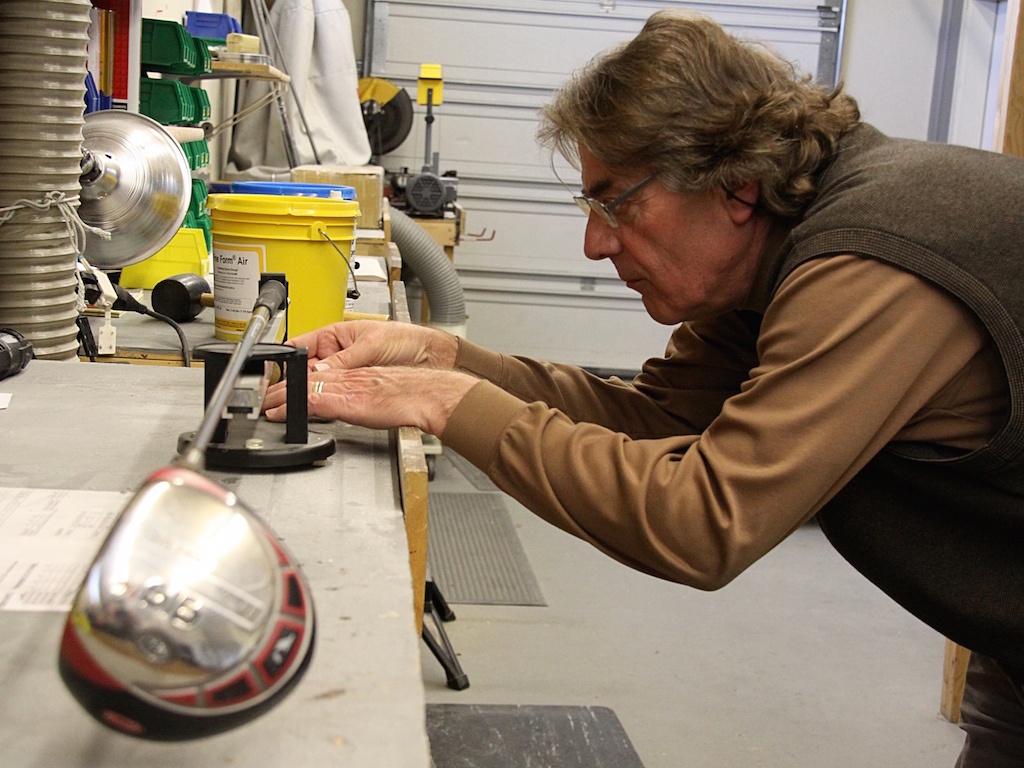

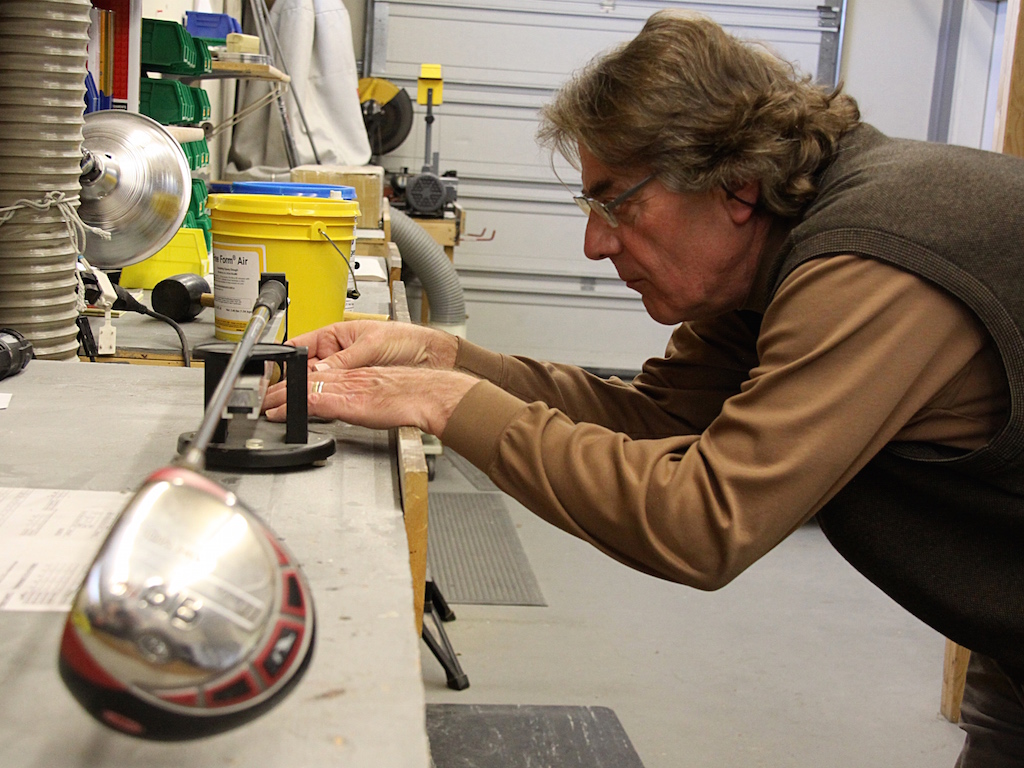
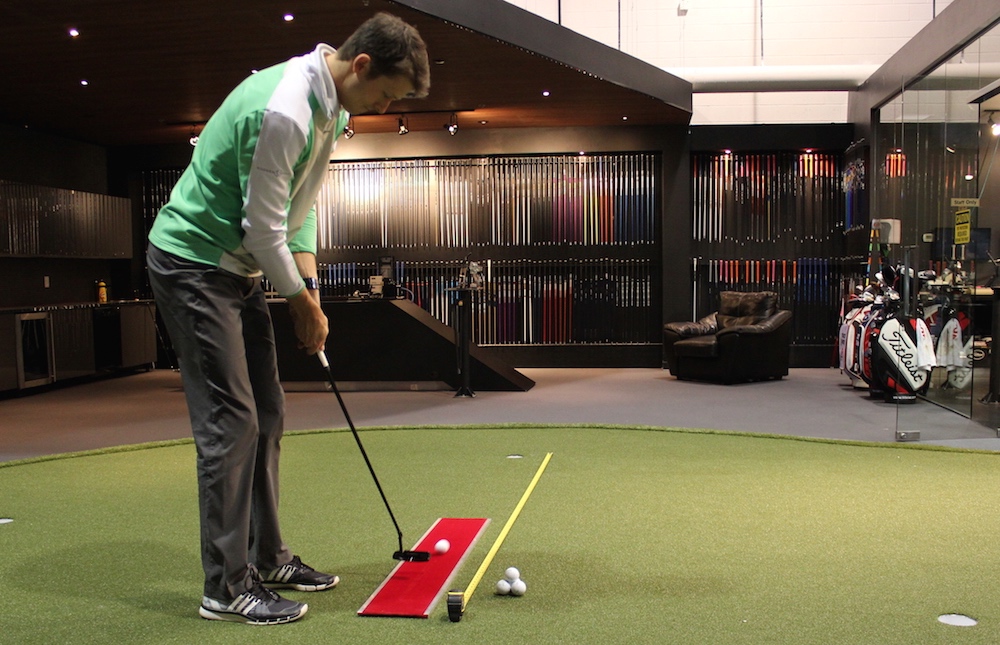
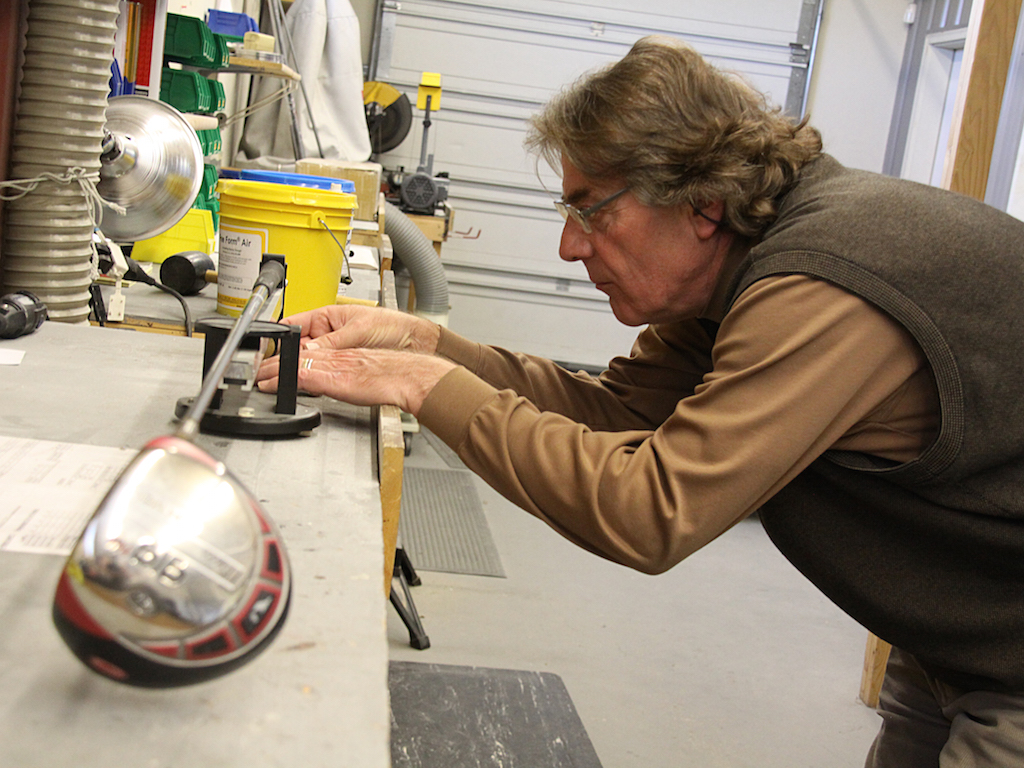








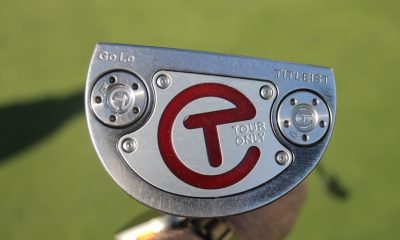



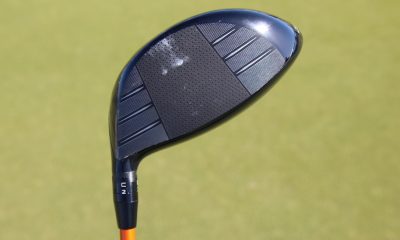



Don Koes
Jan 7, 2021 at 4:42 am
Hi Tom,
In regards to MOI matching, is there any general rules of MOI increment between iron set vs hybrid vs woods vs driver?
Thanks a lot.
rob huget
Nov 7, 2016 at 10:10 am
Tom I have ordered your 575 mb 5 to the gap also your driver. When I ordered my previous set of mizuno mp 32 they were 2 degree’s flat, when Ross Beebe in Chilliwack measured the shafts they were an inch longer than standard. Is this normal if you are going to flatten the degree’s to have the shaft longer. Also I would assume lie fitting for the driver would be the same as the irons, if impact is more to the heel the lie should be flatter. Thanks Rob Huget
Pingback: Improving Slim Shots For Sale | petsloseweight.com
Jim
Jan 20, 2015 at 10:53 am
Tom, I would like to learn how to be a club maker and fitter, I have
read your materials and have some fairway woods from you and
very happy with clubs and your knowledge. So what I am asking is
your advise on how to go about this venture. Thanks Jim
PS I live Massachusetts
zzkevinw
Feb 20, 2014 at 4:03 pm
Thanks Tom,
I’m 60 years old, fit and athletic, a 21 handicap, and have played for 4 years now. I’m ready to buy my first set of new clubs, and put the yard sale clubs in the basement. Whenever I’m listening in on a fitting session at a golf store, the whole experience seems daunting and a bit dodgy, as if it’s only about how much money they can talk you into spending. I’m very green when it comes to the golf-club lingo and such. Can you steer me toward a competent, trustworthy fitter somewhere near either York, ME or Worcester, MA? Cheers.
Starving Golfer
Feb 11, 2014 at 12:04 pm
Tom,
Any recommendations for club fitter/maker in Nashville, TN?
Regards,
Scall1968
Feb 6, 2014 at 2:13 pm
Tom,
How long until the wedge article?
Tom Wishon
Feb 7, 2014 at 5:37 pm
Well the WRX editors were talking to me today about what’s next. Are you asking about how to choose the right wedge for you and your game?
Iain Clarke
May 24, 2014 at 10:57 am
Hi Tom ,
I am also very interested in you forthcoming wedge article as I am currently producing a my own line of wedges via a manufacturer in Fujian , I read part of an article where you were promoting the virtues of a company called Vtech in Tiawan . would it be possible for you to recommend at contact at the company please.
Iain
Zdenek
Feb 6, 2014 at 10:44 am
Hi Tom! I would like to buy first driver for my girlfriend. Like Mizuno EZ driver – 44″ ladies spec…What is you recommendation – something like 42-43? Thanks Zdenek
Tom Wishon
Feb 7, 2014 at 5:36 pm
Need some more information about her.
1. What is the measurement of the distance from her wrist to the floor while standing comfortably erect, shoulders level, arms relaxed at her sides, standing on a hard surface floor in flat sole shoes.
2. What is her avg score or handicap
3. Is her swing path outside in, square or inside out
4. Is her swing tempo, smooth/easy, forceful and aggressive or somewhere in between these
5. Would you say that she is above average in her athletic ability, about average or below avg
Get that info to me and I will be happy to offer the best recommendation for her so the length does not get in the way of her being as good as she can be, yet it can be comfortable for her too.
TOM
Zdenek
Feb 8, 2014 at 10:24 am
Hi Tom many thanks!
1. 82cm (32inch)
2.112, but know in winter we trained a lot with PRO
3.inside out
4.slow backswing, fast change to agressive downswing
5.above average athletic ability
Mike
Feb 6, 2014 at 10:18 am
Great insight Tom. Always learn something from your articles and posts on the site. Just made the switch to heavier shafts in my driver and fairway wood and definitely see a big difference and less Slices. Not to mention cutting the driver down to 44″ and 3 wood to 42″ for better consistency. Looking forward to reading more of your articles.
Bo svensson
Feb 2, 2014 at 9:32 am
Thanks tom for an excellent article. I am really keen after reading this to make a proper set for myself. Do you have any experience of teeview, a club fitter in stockholm, sweden? Or recommend someone else in the area?
Thanks in advance!
Tom Wishon
Feb 7, 2014 at 5:39 pm
Tee View is OUTSTANDING in clubfitting. Seriously, Conny and Leif are really good, very experienced and without question you WILL walk away with the very best fit you can possibly get. (and I bet you did not know that Leif is a former Olympic athlete for Sweden) Don’t hesitate to call them – your golf game will love them when you are finished!
Jack cheney
Jan 30, 2014 at 1:42 pm
Tom, great article, and I told Glenn Malmquist you said hello. He is 88 years young and still active. He says hello to you and keep up the good work! Thanks, jack
Tom Wishon
Feb 7, 2014 at 5:41 pm
I bet he is still active. Shoot, from what I remember about his energy level when I used to talk to him regularly in clubmaking back in the 80s and 90s, he is going to outlive every one of us here! And you tell him that too!
Christian
Jan 24, 2014 at 3:13 pm
Hi Tom, thanks for the article. I have a question specifically about Hybrid fitting. I have been trying very hard to find a 2H with mixed results. I’m a 1 hdcp and play a straight or small draw, can’t hit a fade to save my life. I’ve owned three 2hybrids in my search and am finding a pattern. The 2h’s I’ve tried from a tee produce an unexpected big fade and often start right of target. I’m not sure why it is the only club in my bag producing these results. All shafts have been stiff at 75-80 grams.
So the question is, what are the most important spec’s to consider when getting fit for a 2hybrid? Thanks Tom.
Christian
Tom Wishon
Jan 29, 2014 at 1:08 pm
It is difficult to know for sure what could be causing you to fade the ball this much with this hybrid when you do not do that at all with any other club. Typically for that to happen, the face angle of the hybrid would have to be much more open than any of your other clubs. But as a 1, I would think that you would see this when you put the club down in the address position. Really from all my experience for a really good player to fade/slice one club only would point to this having a much more open face. Only other thing would be if the headweight feel was much too light for your swing tempo, but here again as a 1, you would have noticed that right away.
I tend to see hybrids as irons, meaning to be the same length as an iron of that same loft. Most all OEM hybrids are made to lengths that are longer by 1″ to 2″ than what an iron of the same loft would be. Now for you as a 1, that length should not be an issue. Only other thing I can add is to experiment with your ball position with this hybrid. Some hybrids by virtue of their length play more consistently when a little more forward ala a fwy wood, while others require from their length to be played a little back, like halfway between left heel and center.
Christian
Mar 12, 2014 at 1:05 pm
Thanks for the reply Tom. I have since tried another 2 different 2h which produced big hooks. I’m starting to think I just don’t know how to hit a 41″ 2h 17* club specifically.I don’t know enough about shafts to compare and all 5-6 2h’s I’ve tried have all had different stiff shafts. At this point I think I’ll go find a fitter just to find a 2h I can become “friends” with. I have 13 clubs that are my close “friends”, can’t wait to figure out what my issue is with 2h’s and find one to fit into my set. *still searchin*
Don Porter
Jan 23, 2014 at 6:52 pm
I have been more accurate with my driver since I started choking up. Does shortening the club help more than just choking up?
Tom Wishon
Feb 7, 2014 at 5:43 pm
As Mr Penick taught me years ago, he preferred the term “gripping down” on the club as there is just this “other” connotation with the term “choke”. . . . cough cough. ((!!))
Gripping down is fine as an alternative to physically cutting the club shorter as long as the smaller grip diameter that brings about is not uncomfortable to you. That’s really the only downside to gripping down because grips are all tapered in their diameter.
Brian
Jan 20, 2014 at 1:47 pm
Hey Tom, I am a 4 handicap living in Minot, North Dakota. I have been looking into a new set of irons as well as a new 3 wood. I am 6’4″ and have used standard length, lie clubs my entire life. My problem with my irons is that my misses with my short irons tend to be a blade, and my problem with my 3 wood is that it feels way too light for my swing/swing speed. Any suggestions on an experienced club fitter in my area? I would really like to know what it feels like to swing properly fitted clubs.
Thanks,
Brian
Tom Wishon
Jan 20, 2014 at 5:16 pm
Brian
Ouch, sorry about the fact that custom clubmakers are scarce up in your neck of the woods. In such cases when there is not a decent clubmaker in someone’s area, we have a program where we can help you. If you would please send us an email at [email protected] we will be glad to explain how we can help you.
Thanks
TOM
Chris
Jan 28, 2014 at 2:26 pm
Brian,
If you ever get the chance to stop in at an Austad’s Golf in Fargo, they have a store there. Talk to Nick, he is the manager at the store and would probably be of great help to you. I work at one of the other stores and Nick is a very nice guy. It would definitely be something I would consider if you wanted to get fit off a launch monitor.
James brown
Jan 17, 2014 at 8:31 pm
Just had elbow surgery on left elbow. I’m looking to do a whole new club set. Dr. Says to go with graphite shafts. I had the UST recoil prototype put in my mp-69 and have just hit today the wedge and 9 iron. How good they feel and different also. Can you tell me of a very good Wishon clubfitter in North Carolina? I am in High Point-Greensboro area. That’s in central part of state.
I have spent my last 2-3 months on the shelf reading your material. Thanks, james
Tom Wishon
Jan 19, 2014 at 12:57 pm
I can offer two recommendations not too far from High POint. Steve Thornton in the Winston Salem area at 336-817-6907 or [email protected] – or in the Thomasville area, Special Tee Custom Golf at 336-887-3333.
Thanks very much for using my reading material to help you get through the re hab period! Best to you!
AJ Jensen
Jan 16, 2014 at 12:57 pm
Funny you mention this about the 7-wood. A friend of mine has an old seven and he uses it for so many different shots, and with such good results, I’ve had my own eye out for a seven just like it.
With the recent trend toward higher lofted drivers, do you see fairway woods making a similar loft increase? I ask because I’m in the market for a new fairway wood, after hitting a Stage 2 HL model with 16.5 loft, and in the simulator it seemed to outperform my current Burner 1.0 13-degree spoon.
Tom Wishon
Jan 19, 2014 at 11:28 am
No, actually fairway woods have undergone a very slight loft decrease over the past 30 yrs – like irons but not even close to as much of a loft decrease as with the irons. Up to the 80s, 3 woods were all 16*, 4 wood was 19*, 5 wood 22*, 7 wood 25*. These days the avg 3 wood is 14-15, 4 wood 16-17, 5 wood 18, 7 wood 21 and 9 wood around 24.
The reason higher loft drivers hit the ball farther as swing speed is slower while with fwy woods and irons that isn’t the case has to do with the relationship of swing speed to how much the ball can keep flying up and up in the air on a lower launch angle. For most golfers, that “point of reverse return” when less loft means more distance comes at around 16, 17, 18 degrees – also depending on swing speed for sure. But once you get to 20*+ almost all golfers will hit a lower loft longer in distance because the height of the shot at higher lofts keeps the ball up in the air with enough spin to allow the ball to fly as far as the ball speed allows. With slower speeds and lower lofts, you just do not have the ball speed or spin to keep the ball up in the air longer enough to really fly to the maximum distance the ball speed would allow. So more loft on the driver means more distance for slower speeds because the loft launches the ball higher and with more spin to keep the ball up in the air longer.
Where the slower swingers have to be careful with woods is to generally not try to use a 3 wood unless you have a 90mph speed and have good swing fundamentals. Today’s 14-15 3wood lofts are just too low for slower swing speeds and especially for slower speeds + less that great swing characteristics to hit well up to fly.
JRUt
Jan 16, 2014 at 11:23 am
Tom,
Great article. It really applies to those of us whom are “vertically challenged.
What are your opinions regarding club fit and the growing junior golfer? Should they be fit twice a year, or more?
It’s been an interesting 18 months with multiple growth spurts.
Tom Wishon
Jan 19, 2014 at 12:51 pm
Having remembered when the growth spurt hit with my son, I certainly understand what you are going through. Usually though the faster it happens, the sooner it will calm down so changes in the length of the clubs can be limited. In general, with more athletic kids, if their initial jr clubs were fit properly for length, you can figure that for each 4″ they grow in height, the clubs would need to get another 1 inch longer. This is a basic average and for sure can be different due to kids’ differences in height vs arm length. But for economics sake, it would be best if you could extend the length of the clubs for the first length increase you need up to an increase of +2″. Then when you need to go longer than that, you would need to re shaft or get new sticks.
Steelydan
Jan 16, 2014 at 4:53 am
Tom,
Thanks for the great article. For a tall guy like me with relatively short arms (wrist to floor is 39″), would you rather start an iron fitting with upright lie or with longer shafts? I hear so many different opinions about this. Most recommend to limit shaft length and increase lie angle, but I understand length is not so much of a problem in irons? Would +2″ still acceptable?
Thanks
SD
Ken Christopherson
Jan 15, 2014 at 10:40 am
Tom, as usual, you make sense. Thank you. I think any one of your books is a great place for someone to start to get an idea of how they are handicapped by not having equipment that fits them and their game. It is interesting that Titleist used to write on their website that less than 5% of customers can use off the shelf clubs effectively, and that most golfers would benefit from being custom fit. Each of us needs: different swing weights, different club lengths, different lie and face angles, different grip sizes, matching clubs to MOI, the correct choice of shaft weight & flex, all to fit our specific athletic and physical characteristics. You are a voice of reason and effective common sense in a market filled with marketing hype.
dman
Jan 14, 2014 at 12:15 pm
Tom, I find it hard get a hold of good clubMAKERS. Can you recommend someone in the LA area? East side if possible? There are so many guys out there at these big box stores that really don’t know what they are doing or are just careless. Thanks.
Tom Wishon
Jan 14, 2014 at 4:04 pm
Based on my limited knowledge of LA geography, a really good clubmaker in what I perceive to be “sort of east” LA would be Ron Burleson of Corona Custom Golf in Corona – 951-279-9663 or [email protected] (www.coronacustomgolf.com). And then further east would be Philip Moore of Exact Golf in Cathedral City – 760-904-5198 or 951-377-6268 / [email protected]. I’ve known both of these men for some time, have had them at clubfitting seminars over the years, and can testify they both know what they are doing for sure in serious clubfitting.
dman
Jan 14, 2014 at 6:21 pm
thank you very much!
Stan Szczsponik
Jan 11, 2014 at 7:22 pm
Tom,
Wondering if you can recommend someone in Rhode Island, Massachusetts or Connecticut to perform the fitting. If not, are you available and where are you located?
Thank you.
Stan Szczsponik
Coventry, Rhode Island
Chad
Jan 12, 2014 at 3:48 pm
Stan,
Tom Spargo – Spargo Golf in Cranston, RI
spargogolf.com
You won’t be disappointed!!
Tom Wishon
Jan 13, 2014 at 7:18 pm
Real quick Stan to echo what Chad told you about Tom Spargo. I know him personally from him being at a number of the clubfitting seminars I have done over the years and he is VERY good.
Tanner
Jan 10, 2014 at 7:43 pm
Good info Tom. As a life long 25-30 handicapper, should I forget the
the proper core turn and swing from the ground up and just get the face
fixed? I will say, I don’t have an issue of a slice. The problem is usually a lack of distance or a proper strike where my ball falls short of the target. Will these changes help there or is it more to fix
a slice?
Cheers
Tanner
dman
Jan 14, 2014 at 12:12 pm
this is a very specific question for a high handicapper. go see a pro who is also a clubfitter!
Phil Marshall
Jan 10, 2014 at 7:46 am
Superb article, I have followed conventional wisdom and industy maketing down some blind allies eg lighter shaft, total club weight, that were inappropriate for me. Amazing results from trial and error outcomes that so closely match Tom’s real wisdom. This shaft weight and head weight matching to a golfer is just so impotant to performance.
Tom, I think another book is warranted.
Thanks so much
Dennis
Jan 10, 2014 at 12:37 am
Hi Tom,
Great article, has got me thinking and reading more shafts. I play Mizuno MP 58 with DG S300 shafts that play well. Woods and hybrid not so much. These are also Mizuno. Driver MP 630 10.5 deg, 4 wood mp 16.5 deg, 20 deg hybrid mp clk. What shaft would be best to get the same feel in these as the irons?
Thanks
Tom Wishon
Jan 13, 2014 at 7:21 pm
Most players who like the feel of the Dynamic Gold do need to get themselves into a tip firm shaft as well for the woods. Problem is there are MANY tip firm shafts in woods in MANY varying levels of tip stiffness. So the bottom line is really to see if there is a really experienced clubfitter in your area with whom you can work so he can better evaluate the shafts you have used in the woods that are not quite right, then from that he can get a better idea of where you need to go next with the wood shaft. What town/city do you live in/near? Let me know that and I can look to see if there is such a good clubfitter in reasonable proximity to where you live.
Chuck
Jan 9, 2014 at 10:09 pm
This is just a stunningly intelligent article. I’ve been playing with a 42.5″ steel (DGLite X100) 3-wood for 12 years. TM 200 Tour “smoothie”. I would not take $400 if someone wanted to buy it from me.
And I plan to build myself a 43.5″ steel (DGSL) driver this year; probably a SLDR 430.
Experimenting is fun, easy and enjoyable when the shafts cost $14.95.
Thank you for all of your wonderful writing, Tom.
Shallowface
Jan 9, 2014 at 6:03 pm
The tricky part about grip size is the different amounts of taper from one shaft to another. Some shafts taper very little, and some taper a great deal. When you’ve got a driver with one shaft, fairways with another, hybrids with another still and then the set of irons, getting that grip size consistent, especially under the trail hand, can be a chore. But it’s necessary if you’re going to have a consistent grip with every club.
Loop
Jan 9, 2014 at 5:39 pm
Tom fantastic info on the budget MOI fit for irons. Thanks. With the 3/8 length changes, do the lie angles have to also be adjusted accordingly?
Tom Wishon
Jan 9, 2014 at 6:51 pm
Lie angle always should be rechecked dynamically whenever a golfer changes lengths on his clubs (or if you’re dead serious when you change shafts, change swingweight/headweight too).
LY
Jan 9, 2014 at 2:45 pm
Tom:
I saw a big improvement in my consistency when two years ago I changed my set make-up so that the 7 iron was the first iron in my bag. I volunteer at an LPGA event every year and I get a chance to look in a lot of the players bags. I noticed a very high percentage carried more than one hybrid. So I’m thinking to myself on the drive home, if the best women players are using more than one hybrid then how come I’m not.
James
Jan 9, 2014 at 2:22 pm
Mr. Wishon, what is the best way to ensure my current driver, if cut down to 44 inches from current 45.5, is weighted properly? Unfortunately in my area, clubmakers are rare and most things I have to do myself.
Tom Wishon
Jan 9, 2014 at 7:01 pm
Get yourself some lead tape and head to the driving range. After warming up through the bag, hit 2-3 shots, add 2 strips of lead tape, each 4″ in length (anywhere you want on the head – though flat across the sole is a real easy place to put it) hit 2-3 shots, add tape and so on.
What you want to do is note the feeling of the head’s weight during the whole swing, backswing, transition and then downswing while hitting shots and progressively adding a little weight. Do this until you start to feel that the head’s weight is feeling a little on the heavy side to you. Then back off 1-2 strips of the lead tape and hit 3-5 shots with that, and see if you feel that you need to drop any more headweight from a FEEL standpoint of it still being a little heavy.
Then several days later come back to the range, warm up, then hit 3-4 drivers with the club as you finished weighting it the last range session and reflect on that headweight feel one more time to see if you sense whether the weight feel of the head on the end of the shaft still feels pretty good, not too heavy and not too light.
It really is best to do it this way so you do not get trapped into a specific set swingweight measurement. Some guys will add weight back to the head after shortening the club to make the shorter club’s swingweight the same as what it was at the longer length. Lots of times if you do cut 1″ or more from the length, that becomes too much headweight when you add weight to get the swingweight back to the same as it was at the longer length. Swingweight is not an actual weight – it is simply an expression of the relationship of weight on one end of the club vs the other. When you change length dramatically, the swingweight that represents the best headweight FEEL for your swing timing and tempo won’t likely be the same at the shorter length as it was at the longer length.
Hence the reason to have to go through a hit a few, add weight, hit a few, add weight – and reflect on the headweight FEEL as you keep doing this a little at a time. You’ll find that point where the weight feel of the head during the swing is not too heavy and not too light. And that’s where you stop and forget it from then on as you head out to play.
TOM
Ron
Jan 18, 2014 at 1:58 pm
Tom, love your posts. I’ve got a Nike Covert that I have to choke up about an inch or so to hit consistently, but I was hesitant to cut it down. It’s the stock length which is 45.75 which is way too long for me, even as a 3 handicap. I’ve got a very aggressive swing with fast tempo so I’m right in the category you say will benefit from shorter driver length. If I lop off 1.75 inches, I’m afraid that’s going to take an awful lot of lead tape. Any ballpark of how many strips I’ll need? If it helps, my favorite driver of the past few years was a Callaway Razr Fit with a whiteboard x73 that measured D6. I went away from it last year when I gained about 20 pounds, lost flexibility from less play, and lost about 8 MPH swing speed. I haven’t been fully properly fit since my fitness declined but I just tweaked based on feel. Any advice for a fitter in central NJ?
J.A.
Jan 9, 2014 at 1:51 pm
Tom, what about proper iron length? If you recommend shortening woods by a half to a full inch, would that also be suggested for irons?
Tom Wishon
Jan 10, 2014 at 11:29 am
No, irons over the years have not increased inordinately in length as have drivers and fwy woods. If you go back to the 80s before this length increase began, drivers were 43″, 3 woods were 42″, and the 5 iron std length was 37 1/2″ Today we see the avg driver at 45.5″ with some at 46″, the avg 3w is 43 to 43.5, but the avg 5 iron length is 38″, representing only a half inch increase.
So irons have not “gotten out of line” nor have they increased in length to the point that the modern length could be a performance problem for golfers.
Duncan Castles
Jan 9, 2014 at 1:24 pm
As always, fascinating and informative. And it all works.
Tom is too modest to mention it, but his excellent hybrids, fairways and drivers can be easily adjusted to the correct lie angle without the use of any weight-adding, deceptive hosel device.
Ralph Patterson
Jan 9, 2014 at 12:39 pm
Tom,
Someone asked if you should shorten the driver, 3-wood etc. by cutting the butt or the tip of the shaft but I never saw your answer. What’s the best way to shorten them?
Thanks,
Ralph
Oldplayer
Jan 9, 2014 at 3:39 pm
Always the butt. Cutting the tip can change the flex characteristics dramatically.
Conrad
Jan 9, 2014 at 12:23 pm
I’ve always played 46 in my driver, tried shorter shafts but gained little to no accuracy from it. Drivers always been solid as its the best club in my bag
Tom Wishon
Jan 9, 2014 at 4:40 pm
If you have the time, find my article on How To arrive upon your best lengths which is floating around the tech forum and has been getting some more commentary so it is not too many pages deep in that forum.
You’ll find the exact description of how to know what golfer swing characteristics indicate that longer is better or shorter is better. In general, the smoother/more rhythmic the transition and tempo, the later the release, the more square to slightly in/out the path, the flatter the plane and the better the golfer’s sense of feel and timing, the more they could play well with longer lengths.
The opposite of these swing characteristics all add up to say shorter is a must. I’m betting if you do well with 46″, you possess many to most of the above swing characteristics.
Jeff Burns
Jan 9, 2014 at 12:14 pm
Which one of these tips will give me 17 extra yards? Ha.. I joke, I kid!
Great article Tom and I’ve very happy to see vindication for my 7 wood in here. I’ve even carried a 9 wood in the past and it’s been a huge help. I’ve taken my driver down to 44.5 but I might go shorter and bring the 3 wood down with it.
Thanks for the excellent information.
J
DB
Jan 9, 2014 at 8:46 am
Shorter driver and fairway wood really is the #1 tip. I can’t understand why more amateurs don’t do it. I see all these guys, even shorter guys, with 45.5-46″ drivers.
I’m 6’1″, and went to 44.75″ driver and 42.5″ 4-wood. Both D3. I love it, will never go back to anything longer. In the fairway more often, and I don’t even think I lost any distance. Still have the same clubhead speed.
Bryce
Jan 9, 2014 at 9:56 am
Hi
Shorter with tip cut to make stiffer or butt end cut?
Thanks 🙂
Tom Wishon
Jan 10, 2014 at 11:30 am
When shortening an existing club, cut from the butt end. And then go to work with lead tape to see what headweight increase is necessary to get the headweight FEEL comfortable during the swing.
Mats "PUMP 2" Bergsten
Jan 9, 2014 at 7:52 am
Tom,
Great article, as always when you decide to share your thoughts and knowledge!
Living in Sweden I use David Leet, PGA Pro at Falsterbo GK, to fit my clubs. He uses all the equipment to get my clubs MOI matched and all other variables as well. Very much into details, as well as I am. Reading your articles and visiting you website, givs me a better understanding, when collaborating with him, in a strive to get the best fitted equipment for myself and my game.
Keep up the good work!
Tom Wishon
Jan 9, 2014 at 12:00 pm
Matz:
Thanks much and just wanted to echo that you couldn’t be in a better place for your golf! Not only is Falsterbo such a great links, but David Leet is truly a “pro’s pro” in every facet from teaching to training to fitting to being one of the nicest people on the planet. And it is great that your club is continuing to work on improving the links with the course revisions you are making. I’ve been very fortunate to have been to your club several times. I wish I could own a house in the neighborhood and be a member and hang out there a lot.
Rich
Jan 9, 2014 at 7:39 am
I have been in the golf retail industry and buying gold equipment on a regular basis in the Australia (Sydney) for the best part of 20 years now. There is no one (green grass or off course retail) that would know how to do this kind of detailed fitting here. It just does not exist. I know more than any (maybe all put together) of the people (including club pro’s) working in golf retail in my area, about golf equipment, shafts, tech data and performance, full stop. I was even fit for a set of Titleist irons in the last 12 months or so and the fitter had to refer to a book (fitting manual of some kind) because he didn’t know how to fit me properly. Needless to say I didn’t buy the irons. Fitting here in Sydney Australia is a buzz word, not something that people know how to do. I’m not sure there is anyone that knows how to do it properly in my experience. The only people I have left to try are the Ping guys here in Sydney. When I’ve spoken to them on the phone, they sound like they actually know what they are doing but I haven’t tried their fitting process out yet so I may have to give them ago the next time I’m in the marker for something.
Tom Wishon
Jan 9, 2014 at 12:18 pm
Do you know Gary Tozer at Aussie Custom Golf up in Gateshead? http://www.aussiecustomgolf.com – 417 297 266 . Maybe about 60 miles from Sydney.
Oldplayer
Jan 9, 2014 at 3:44 pm
What about Melbourne Australia Tom? I have experienced the same as Rich and find it hard to get fitted properly. Sydney is 800 Kilometers away.
Tom Wishon
Jan 9, 2014 at 4:35 pm
Ahhh, Melbourne you are in LUCK!!!! Call Geoff Waldon on 39 439 8151 or email him at [email protected] and book a fitting appt as fast as you can. Geoff is REALLY GOOD, very experienced and has been doing this on a low key basis for quite a number of years now.
TOM
Rich
Jan 9, 2014 at 4:30 pm
Thanks Tom. Gateshead is about a 90-120 mins drive from Sydney but’I might have to get in touch with him. Cheers.
Brandon
Jan 9, 2014 at 12:58 pm
Pure Performance Golf Labs Sydney location opens at the end of January. Over 30,000 combinations and every brand that is not only fit but then hand built to those exact specs.
Pureperformancegolflabs.com.au is the website
Rich
Jan 9, 2014 at 4:59 pm
Thanks Brandon, I will check them out too. Cheers.
JohSte
Feb 26, 2014 at 8:57 pm
Hi Rich
see Dave Reckless at Dural Golf Driving Range.
In the best 100 fitters in the world.
sam Brooks
Jan 9, 2014 at 4:46 am
Yip I’ve just gone back to 45.5″ driver.. That’s all I need to hear. I’m cutting it down an inch first thing in the morning… Tom says I do!!!
Patrick
Jan 9, 2014 at 3:36 am
Tom, fixing slices a
Robert
Jan 9, 2014 at 3:29 am
Nice article, a lot of good information in there. However, I am sceptical towards changing the face angle. I mean, shouldn’t we as practitioners of the sport strive towards perfecting our technique instead of compensating with equipment in a way that almost encourages swing faults?
Tom Wishon
Jan 9, 2014 at 12:07 pm
Without question golfers should work on their swings and do their best to keep improving their swing characteristics. But the hard cold fact is that not that many golfers have the time, money or commitment to take the lessons and work as hard as is required to make permanent swing changes. Not only that but the swing moves required to hit the ball straight are most definitely body movements that not that many people have the athletic ability to do – to master a square to slightly inside out swing path with a later to very late release are two very challenging movements for less athletically inclined people to master.
To natural athletes, these things are not that difficult to do so they can’t imagine why all golfers can’t do it. but it is a fact that with MANY golfers who swing over the top, outside in and slice the ball, no matter what they will never master a swing path and release change to be able to turn that slice into a straight ball.
It is for those golfers that face angle fitting stands as one of THE most important game improvement elements that can be used to enjoy the game more. And according to Golf Digest, over 70% of all golfers do slice the ball to some degree – so that’s a whole lot of golfers who could enjoy the game more if they did draw upon face angle fitting as part of their fitting improvement work.
paul
Jan 8, 2014 at 11:51 pm
He writes, I read.
P
Jan 8, 2014 at 9:58 pm
Problem is, hardly any fitter has MOI machines. And it takes FOR EVER to do MOI fit.
Ian
Jan 8, 2014 at 9:47 pm
Tom, after getting the weight in the six iron correct how do you determine the proper weight for the rest of the irons. I know there are MOI measuring machines but if you don’t have one what would you suggest the swing weight progression should be?
Tom Wishon
Jan 9, 2014 at 12:11 pm
One can come VERY close to an MOI match by making the irons to be in 3/8″ increments for length AND then making the swingweights to progress upward in 0.5 swingweight point increments down through the set. So let’s say the ideal 6 iron you find is 37 1/2″ and D1. Starting with the #7, the lengths get shorter in 3/8″ increments per iron and the swingweights go D1.5 for the #7, D2 for the #8, D2.5 for the #9, D3 for the PW. And on the other side of the #6, the #5 becomes 37 7/8″” longer and D0.5, the #4 becomes 38 1/4″ and D0. WE joke around and call this the “poor man’s MOI match” but it is a VERY close approximation of using the $500 MOI machine to do the match for the clubs in the set.
P
Jan 10, 2014 at 3:26 am
If that is true, then why do we even need the machine?
Tom Wishon
Jan 13, 2014 at 7:23 pm
Only if you get concerned about the clubs being perfectly matched for MOI within 1 to 2 g-cm2 or if you are ok with being close within say 10-15 g-cm2. for most golfers, the progressive swingweight approach will be close enough.
John Muir
Jan 8, 2014 at 8:38 pm
Great article. I like the driver/control driver/5 wood set makeup idea.
John
Deck
Jan 8, 2014 at 6:33 pm
I recognize that photo!
As usual another Fantastic article Tom.
Tom Wishon
Jan 9, 2014 at 12:20 pm
Hey Deck!! Thanks! Staying warm up there? And like us, counting the minutes until spring?!! HA!
Merty Huckle
Jan 8, 2014 at 6:12 pm
good stuff.
tom stickney
Jan 8, 2014 at 6:08 pm
Fantastic article….big fan of your work, sir!
melrosegod
Jan 8, 2014 at 6:01 pm
It’s refreshing to read intellegent thoughts based on precision experience rather than “smash-boom” hype. Thanks Tom!
Jeffrey Trigger
Jan 8, 2014 at 5:48 pm
I play an R1 Black with a Kiyoshi white shaft, I had it cut down. I actually hit it further than my longer shafted driver. I play an RBZ Stage 2 Tour HL 3 wood that is a quarter inch shorter than standard. I will never again play a 15 degree 3 wood. Absolute monster. I have a 4 hybrid and 4 through PW. All of those are two degrees upright. I like slim wedge grips on all my clubs. Although finding 580 core grips can sometimes be very hard.
Andrew
Jan 8, 2014 at 5:43 pm
Very insightful as ever Tom. Gone to a 44″ driver earlier this year after reading some of your other articles and the consistency difference is massive…still thinking of going shorter as well along with shortening the 3 wood/3 hybrid to more ‘old school’ lengths.
Was fitted and Went to four wedges last year and have never looked back. Got 46/06, 50/08, 54/11, 58/6 to make sure distance gaps are covered. Santa brought me some higher bounce options to help with the softer winter conditions in the UK and they’re working well also and should give me options through the summer I guess
People really need to look at this especially given some of ‘std’ (very strong) lofts manufacturers are using.
tiger168
Jan 8, 2014 at 5:42 pm
Back to the basics, awesome article, this will be an instant classic.
Pingback: Tom Wishon: 7 club fitting keys to improve shot consistency | Min kärlek till golfen...
Dwaine Ingarfield
Jan 8, 2014 at 5:37 pm
Great article. I am a big believer in using a shorter than new standard driver.
Tom Wishon
Jan 9, 2014 at 6:50 pm
From 1905 to 1985, “standard” length for a men’s driver was 43″. And believe me EVERY company followed that as their standard driver length. having worked in the golf equipment industry since 1980 and doing head design work since 1986 it has always been interesting to be to wonder just why did that “standard” grow some 3″ in the years from 1985 to present day. Golfers didn’t get taller or grow shorter arms over the past 28 yrs. I’ve always wanted to ask the golf companies for an answer to that question.